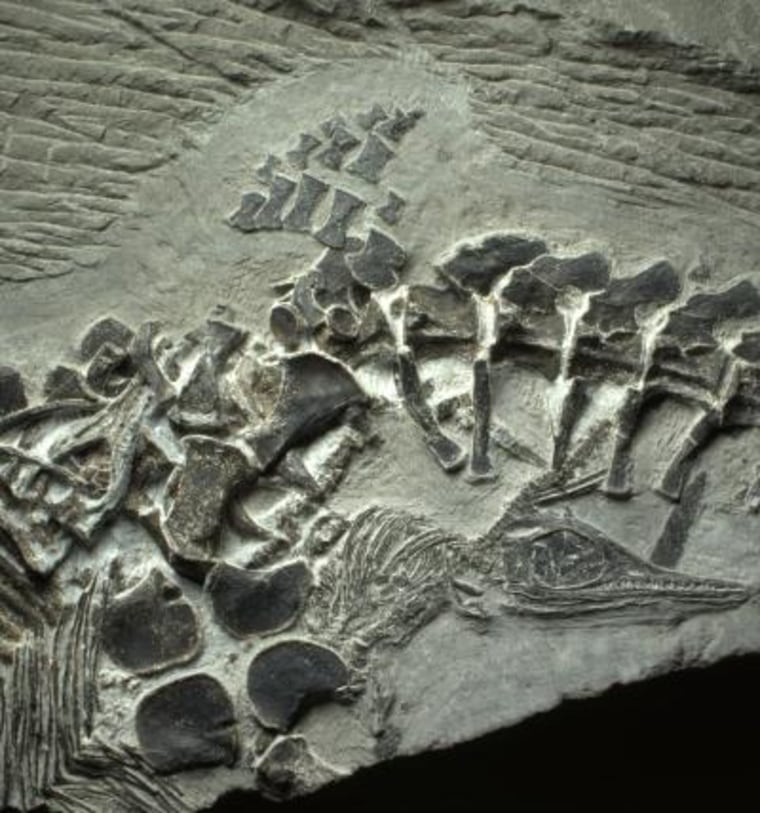A new fossil that captures both birth and death reveals the earliest ancestors of the giant prehistoric sea predators called ichthyosaurs birthed their babies headfirst, according to a new study.
The fossil of an ancient Chaohusaurus mother that likely died while in labor also suggests that reptilian live birth only evolved on land, researchers reported Wednesday (Feb. 12) in the journal PLOS ONE.
Ichthyosaurs were top ocean predators during the age of the dinosaurs. Sleek, streamlined swimmers that grew as long as a bus, they had teeth-filled snouts and enormous eyes for snatching prey. These air-breathing carnivores arose from land reptiles that moved into the water from land during the early Triassic period, between 251 million and 247 million years ago. (The Triassic period follows one of the biggest mass extinctions on Earth, which killed 96 percent of marine species and 70 percent of land species.) [Image Gallery: Ancient Monsters of the Sea]
Previously found fossils of pregnant ichthyosaurs had already revealed the reptiles carried live embryos, not eggs. And one spectacular fossil of aStenopterygius ichthyosaur in "childbirth," from the Jurassic period, between 201 million and 145 million years ago, showed at least one species had newborns come out tail-first.
However, researchers didn't know whether the earliest ichthyosaurs also gave birth headfirst or tail-first. Most air-breathing marine creatures that bear live young, such as whales and dolphins, birth their babies tail-first, so the newborns don't suffocate during labor. But on land, babies tend to come out headfirst. And the earliest whales, which also evolved from land mammals, birthed their newborns headfirst.
The new fossil confirms that the first ichthyosaur babies came out headfirst, the study reports. The ichthyosaur mother died with three young: one outside the mother, one half-emerged headfirst from her pelvis and one still inside, waiting to be born.
This is a condensed version of a report from Live Science. Read the full story.
Email Becky Oskin or follow her @beckyoskin. Follow us @livescience, Facebook & Google+.
